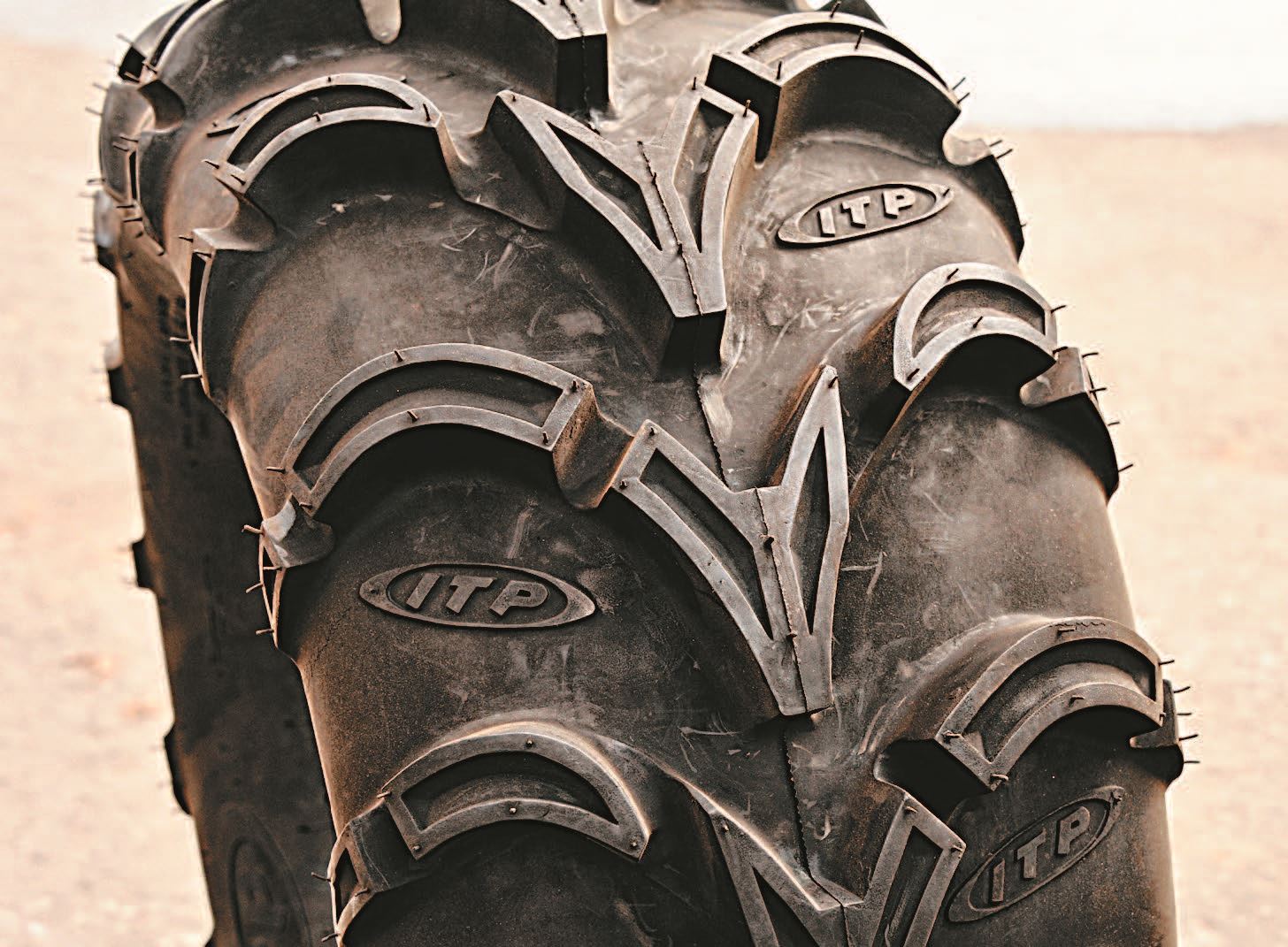UTV tires are just like tires for any other wheeled vehicles: there are many different tire options, each with a different intended use. Variables that need to be considered when choosing a tire include vehicle speed, weight, terrain type, tire wear, side wall strength, wheel type, noise and cost.
However, many customers choose a tire based on looks alone. It’s important to consider how the UTV and tires will be used when choosing which one to install on your UTV.
Tire Size

As we have all heard before, size matters. And it has never been truer than it is with UTV tires. Tire size can be a huge factor in UTV performance. Changing tire size can affect things like ground clearance, top speed, corner speed, center of gravity and traction.
For many people, changing to a different size tire will help their UTV perform better for the conditions they plan on driving in. But if you’re going to change your tire size you first need to know what size you have.
All tires have numbers molded into them from the factory that indicate the size. For example, let’s say you look at your UTV tire and it has the letters/numbers 25x8R-12. The 25 represents the height of the tire in inches. The 8 represents the width of the tire in inches and the 12 represents the diameter of the wheel. Now that you know what tire size you have, you can decide what tire size you want to change to.
For people who spend most of their time off road, installing a taller tire will offer increased ground clearance. It gives them the ability to crawl over stumps, cross creeks and maneuver over rock ledges. The taller the tire, the larger the obstacle they can drive over.
Tire size also affects gear ratio. A taller tire will result in a higher gear ratio while a smaller tire will result in a lower gear ratio. This can be both good and bad. A taller tire offers the potential for a higher top speed, but only if the tire has less weight, less rolling resistance and the clutches have been properly calibrated for the larger tire (more on this later).
On the flip side, a tall tire can also be a disadvantage. Get the tire too big and it will rub on body parts, fenders and wheel wells as well as raise the vehicle’s center of gravity. Additionally, taller tires usually weigh more than a comparable smaller tire, requiring more power to turn them. The heavier the tire or more aggressive the tread, the more power they rob. This hurts acceleration and top speed.
Smaller tires can be an advantage in some cases as well. Closed course moto and grand prix type racers prefer a wider, smaller diameter, low ply tire to give the vehicle a lower center of gravity for better cornering and stability. Major ground clearance is not needed for most track type racing so the lower the vehicle rides the better it will handle.
Another advantage of smaller tires is that they typically weigh less than their larger relatives. Less rotating weight requires less horsepower, resulting in better acceleration and speed. And as stated before, reducing tire size will lower the final gear ratio. This will help acceleration and power but potentially reduce top speed and sometimes require the clutches to be re-calibrated for the smaller size.
Tire Weight

